A Brief History of Nuclear Fission
“Are we living in a Nuclear Renaissance?” This question has occupied many a coffee chat at Giant House this past month, so much so that we decided to put pen to paper. Will Dufton has written a four-part series on nuclear energy, the first instalment of which we are sharing here.
In this series we will cover: a brief history of nuclear fission; reasons to be excited about a nuclear renaissance and the shadows overhanging it; the opportunity landscape of new nuclear; why we should also be excited about nuclear fusion (spoiler: it’s no longer 30 years away).
We are looking actively at opportunities across the nuclear fission and fusion sectors, both from our pre-seed / seed fund and at Series B+. Please be in touch…
“Any sufficiently advanced technology is indistinguishable from magic.”
I think about this Arthur Clarke quote a lot. It is the core of my venture investment thesis in many ways. Groundbreaking technology is magical. The more magical it is, the more impact it tends to have.
Historically speaking, however, magic is heresy: attracting fear, cynicism, and even disgust. Humankind still fears that which it does not understand. You may be surprised to learn, for example, that the last witch trial took place in the UK only 80 years ago.
One groundbreaking technology that popular opinion can’t seem to decide on is nuclear fission. For many people today, nuclear fission is considered a kind of witchcraft that must be purged, for others it is a silver bullet that can magic away many of our problems. So is it a distraction to the rollout of renewables, and undeserving of our trust? Or is it a clean, technological marvel that can make the world a better place, in need of a second chance?
The Dawn of Nuclear
To answer this, we should look to the past and study fission’s history. In 1789 we discovered uranium. One hundred years later, Pierre and Marie Curie defined “radioactivity” - the process by which unstable atomic nuclei release energy. Then things began to move very quickly. We fired neutrons at atoms (Fermi in 1935) to create a controlled nuclear reaction, we split Uranium-235, quantifying the energy release of nuclear fission (Niels Bohr, Lise Meitner and others in 1939), and in 1945, the US dropped two atomic bombs on Japan, changing the world forever.
“Now I am become Death, the destroyer of worlds,” Robert Oppenheimer, one of the masterminds of the Manhattan Project, quoted from the Bhagavad Gita after the first atomic bomb was tested. He saw that mankind had created something far more powerful than itself. It had harnessed nature in its rawest, elemental, most brutal form. He later lobbied for international control of nuclear power to avert nuclear proliferation and a nuclear arms race - opposing the development of the hydrogen bomb.
Atoms for Peace
The atomic bomb was the trigger technology for a nuclear revolution. As with many technological shifts, the military were the early adopters but it became clear that we could harness nuclear energy for good. It was only eight years after the bombings of Hiroshima and Nagasaki that President Eisenhower gave his “Atoms for Peace” address at the United Nations, precipitating an extraordinary global build-out of nuclear power plants.
The first commercial nuclear power plant came online in 1960 and in the 30 years that followed over 400 nuclear reactors were built worldwide. Nuclear power as a percentage of the global energy mix peaked in 1996 at 17%. In France, the Messmer Plan saw 48 new reactors built in the 16 years to 1990 in response to the OPAC oil crisis of 1973. Likewise, Sweden built 12 reactors in about a decade between the 1970-80s, transitioning its energy mix from being 75% reliant on oil to 50% powered by domestic nuclear power. We were capable of building nuclear power quickly, safely and cheaply.
But then, disaster struck. A cooling malfunction triggered a meltdown in one reactor at Three Mile Island in 1979 that resulted in the emission of radioactive gas. Then nuclear’s rise was all but halted by the tragedy at Chernobyl in 1986, when a design flaw caused a reactor to explode, releasing large quantities of radioactive material into the atmosphere. 25 years later, any chance of a nuclear revival was quashed by the disaster at Fukushima Daiichi in 2011, when an earthquake of 9.0 magnitude caused a tsunami that breached the protective walls of the facility, resulting in a partial meltdown of three reactors and the release of radioactive material.
Nuclear State of Play
Between 1990 and today, the number of reactors worldwide has plateaued. In the West, we have shut down more reactors than we have opened. Nuclear power’s share of the global energy mix has almost halved to 9%. Many countries sought to halt plans for new nuclear and decommission their existing fleet, research funding plummeted, resources were left to rot. The only two new reactors completed in decades in the US - were 8 years delayed and $20billion (>2x) over budget - down to changing regulations, a dormant supply chain and bankruptcy of the lead contractor. Overruns at Hinkley Point in the UK have been just as eye-watering.
Notwithstanding all of this, there are whisperings that fission technology is emerging from a decades-long fallow period and that a Nuclear Renaissance is getting underway in the West. In part two of our series we will explore the reasons why this might be the case.
We are looking actively at opportunities across the nuclear fission and fusion sectors, both from our pre-seed / seed fund and at early growth. Please be in touch!



